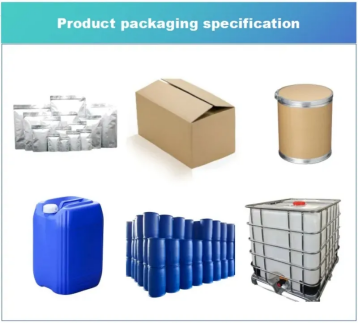Overview of Polyoxyethylene Castor Oil
Polyoxyethylene castor oil is a non-ionic surfactant with both hydrophilic and hydrophobic properties. It is a product obtained by the addition reaction of castor oil and ethylene oxide, followed by polymerization. Polyoxyethylene Castor Oil has a variety of excellent properties, such as good surface activity, emulsification, solubilization, stabilization, biocompatibility and chemical stability. Therefore, it is widely used in cosmetics, food, medicine, chemical industry and other fields.
Technical Parameter of Polyoxyethylene Castor Oil
Density: 1.05g/mL at 20°C
Boiling point: 232.6℃[at 101 325 Pa]
Flash point: 257℃
Water solubility: 24.11mg/L at 25℃
Vapor pressure: 0Pa at 25℃
Acidity coefficient: 0[at 20 ℃]
PH value: 5.0-7.0 (1g/10 mL in H2O)
Storage conditions: REFRIGERATOR (+4C)
Stability: Stable. Incompatible with strong oxidizing agents.
Appearance: Viscous liquid
Color: Clear yellow
Application of Polyoxyethylene Castor Oil
Polyoxyethylene castor oil In the textile industry, Polyoxyethylene castor oil is used as the main ingredient of polyester, polyacrylonitrile, polyvinyl alcohol and other synthetic fiber spinning oils, which has emulsifying and antistatic effects, which can make the sizing soft and smooth, reduce breakage, and can be used as a soft smoothing agent in chemical fiber slurry, and can eliminate foam in the synthetic slurry liquid. It is used as the main ingredient of polyester, polyacrylonitrile, polyvinyl alcohol and other synthetic fiber spinning oils, which has emulsifying and antistatic effects, which can make the sizing soft and smooth, reduce breakage, and can be used as a soft smoothing agent in chemical fiber slurry, and can eliminate foam in the synthetic slurry liquid.

Application of Polyoxyethylene Castor Oil
Cosmetics: used as a wetting agent, emulsifier and dispersant in cosmetics such as skin care products, shampoos, and shower gels, which can improve the use and effect of products.
Food: used as an emulsifier, stabilizer and taste improver in food, which can improve the taste and stability of food.
Pharmaceutical: Used as excipients and additives in pharmaceutical products such as ointments, liquids and capsules, it can improve the quality and effectiveness of products.
Chemical products: used as wetting agents, dispersants and emulsifiers in chemical products such as coatings, inks, and pesticides, which can improve the performance and quality of products.
Technical Parameter of Polyoxyethylene Castor Oils
EL-10 | EL-20 | EL-30 | EL-60 | EL-80 | EL-90 | |
Appearance (25℃) | Light yellow transparent oil | Light yellow paste | Light yellow solid | |||
Active substance content (%) | ≥99 | |||||
Cloud point(℃,1%) | - | 30 | 45 | 85-90 | ≥90 | - |
HLB | 6-7 | 9-10 | 11.5-12.5 | 14-15.5 | 15.5-16.5 | 17 |
pH | 5.0-7.0 | |||||

NANOTRUN(www.rboschco.com) is a trusted global chemical material supplier & manufacturer with over 12-year-experience in providing super high-quality chemicals and nanomaterials, including boride powder, nitride powder, graphite powder, sulfide powder, 3D printing powder, etc.
The company has a professional technical department and Quality Supervision Department, a well-equipped laboratory, and equipped with advanced testing equipment and after-sales customer service center.
If you are looking for high-quality Polyoxyethylene Castor Oil, please feel free to contact us or click on the needed products to send an inquiry.

Packing of Polyoxyethylene Castor Oil
1kg/bottle, 25kg/barrel, or 200kg/ barrel.
We have many different kinds of packing which depend on the quantity.

Payment Methods of Polyoxyethylene Castor Oil
L/C, T/T, Western Union, Paypal, Credit Card etc.
Shipment of Polyoxyethylene Castor Oil
By sea, by air, by express as soon as possible once payment receipt
Q1
Is polyoxyethylene castor oil irritating to the skin?
Answer: Polyoxyethylene castor oil is relatively mild and safe for most skin types. However, with some sensitive skin, irritation or allergic reactions may occur. Therefore, a skin test is recommended before using products containing polyoxyethylene castor oil.
Q2
What is the difference between polyoxyethylene castor oil and castor oil?
Answer: Castor oil is a natural vegetable oil, while polyoxyethylene castor oil is chemically modified castor oil with the introduction of polyoxyethylene chains, thereby changing its physical and chemical properties, such as hydrophilicity, stability and emulsifying properties.
Q3
Is polyoxyethylene castor oil safe for use in food?
Answer: Polyoxyethylene castor oil is allowed in certain food applications, but it should be used in compliance with the maximum usage levels specified in relevant regulations and standards. Also, make sure the other ingredients in the product are safe as well.
Q4
How to test the quality of polyoxyethylene castor oil?
Answer: The quality of polyoxyethylene castor oil can be detected through visual inspection, chemical analysis, physical property testing and other methods. Among them, chemical analysis is one of the most commonly used methods, and its quality can be evaluated by measuring its purity, moisture content, impurity content, and the length of the polyoxyethylene chain.
Q5
Is polyoxyethylene castor oil suitable for all types of formulations?
Answer: Polyoxyethylene castor oil is suitable for many types of formulations, such as pharmaceutical preparations, cosmetics and foods. However, different formulations and market demands may affect the suitability of polyoxyethylene castor oil. Therefore, when choosing whether to use polyoxyethylene castor oil, the overall formulation of the product and market demand need to be considere.
Polyoxyethylene castor oil Properties | |
| Other Names | N/A |
| CAS No. | 61791-12-6 |
| Compound Formula | N/A |
| Molecular Weight | N/A |
| Appearance | Light yellow transparent oil, light yellow paste, light yellow solid |
| Melting Point | N/A |
| Boiling Point | N/A |
| Density | N/A |
| Solubility in H2O | N/A |
| Exact Mass | N/A |
| Polyoxyethylene castor oil Health & Safety Information | |
| Signal Word | N/A |
| Hazard Statements | N/A |
| Hazard Codes | N/A |
| Risk Codes | N/A |
| Safety Statements | N/A |
| Transport Information | N/A |




